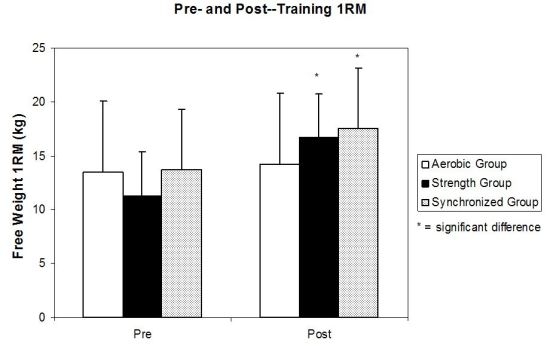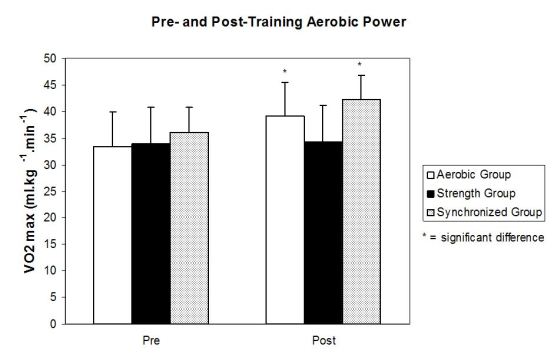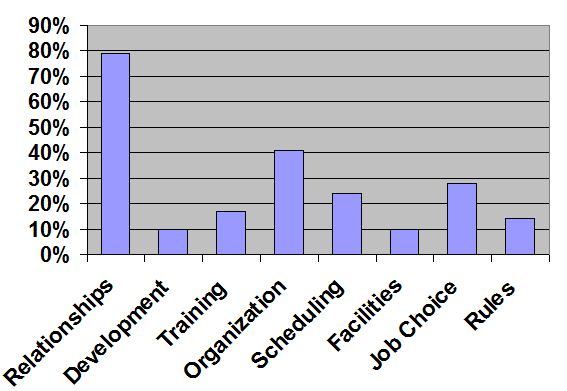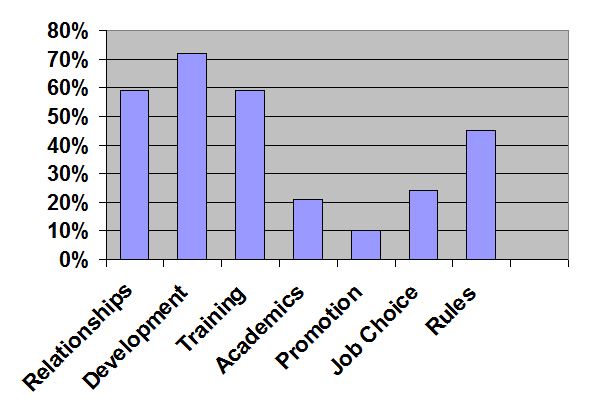The Effects of the Speed Function on Some Technical Elements in Soccer
Abstract
The purpose of this study was to examine the effects of the speed function on some technical elements (dribbling, slalom and agility) in soccer, and to determine the effect ratio of these elements on one another. Some information regarding the purpose of this research is given by means of literature review. The subjects of the study, 177 soccer players selected from the 1st, 2nd, and 3rd League, amateur and two youth teams in Ankara, Turkey, has undergone a performance test including one each of a sprint 0-15-30 m, slalom 0-15-30 m, and dribbling 0-15-30 m, and an agility test. Sprint, slalom and dribbling tests were applied twice, with the players resting between each trial. Finally, the agility test was performed. The reliabilities of the tests (Sprint = .74; Slalom = .61; Dribbling = .76; Agility = .81) were determined for the players (n=40). The performance values of the subjects examined showed that while speed function does affect the agility competency, it had no effect on slalom and dribbling competency. The other findings showed that slalom and dribbling competencies affect each other positively.
Introduction
In soccer, in addition to mental, psychological, physiological and coordinational features, the improvement of conditional features is important as well. Peak conditional features in soccer players provide an advantage. Much of what affects the results of a match occurs during or after the high intensity sprint. Analysis of the specific movements and activities performed by football players during games can provide much relevant information on which suitable training programs can be designed (Dawson, 2003).
Success in soccer is dependent upon a variety of factors including the physical characteristics and physiological capacities of the players, their level of skill, their degree of motivation, and tactics employed by them against the opposition. Some of these factors are not easily measured objectively, but others can be tested using standardized methods and can provide useful information for coaches (Mosher, 1985).
In soccer, speed plays an important role; the accelerated pace of the game calls for rapid execution of typical movements by every member in a team. In many instances, successful implementation of certain technical or tactical maneuvers by different team members is directly related with the degree of velocity deployed (Kollath & Quade, 1991).
According to the Dawson study (2003), the large majority of sprints performed in soccer take six seconds or less to complete, over distances of only 10-30 meters, and many of the sprints involve at least one change of direction.
As running speed increases, longer strides are taken. In this instance, the swing phase involves greater knee flexion and hip extension, and greater hip flexion in the latter part of the phase (Howe, 1996).
During soccer games, many actions affect the result of games. These actions are characterized by intermittent and multi-directional movements, as well as the movements of changing intensity and time.
Reilly and Ball (1984) stated that each game typically involves about 1000 changes of activity by each individual in the course of play, and each change requires abrupt acceleration or deceleration of the body or an alteration in the direction of motion.
Specific physical and physiological characteristics of soccer players can be used by coaches to modify training programs and to help players prepare for the game strategy. The modern soccer relies on the ability of all players to attack and defend whenever necessary. Therefore, it is important that all players achieve a high level of performance in the basic skills of kicking, passing, trapping, dribbling, tackling and heading. Analysis of the physical and physiological characteristics of the players and determination of the specific requirements for optimal performance are thus a necessity (Tiryaki et al., 1996).
Technique refers to the relationship and harmony a player demonstrates with the ball and describes the performance of a solitary action in isolation from the game, e.g. pass or dribbling (Bate, 1996).
Dribbling a ball was chosen in this study as this represents one of the most exciting aspects of the game for spectators, and a great deal of time is devoted in training to its practice (Reilly & Thomas, 1979).
When running with a ball, much shorter strides are taken as the player must be ready to change direction and speed. At the toe-off phase, the leg may not be as extended heel stride may not be as pronounced, rather the foot may land in a more neutral position or be plantarflexed (Howe, 1996).
It is known that players with sprint skills have advantage over other players. However, the degree of effect has not been determined. In this study, we wanted to determine the degree of effect of sprint on technical elements. In other words, the purpose of this study was to examine the effects of the speed function on some technical elements in soccer, and to determine the effect ratio of these elements on one another. Thus, soccer-training programs could specify and propose the degree, frequency, intensity and volume of sprint and technical elements.
Methodology
Participants
This investigation was performed during the 1999-2000 season and included players from different league group teams competing in Ankara, Turkey (177 soccer players selected from 1st, 2nd, 3rd League, amateur and two youth teams). All subjects were informed about the purpose of the study and of its voluntary nature, and all provided their consent to participate. The study involved analyses of performance of these players. We examined the literature for related investigations.
Apparatus and Task
To establish reliability, the tests were applied to 40 players in ‘on season’ and ‘off season’. Paired sample t – test statistical tests were used. The reliability values were determined as follows:
According to match analysis, in match situation maximum sprint distance is approximately 20 – 30 m. However, the soccer players run about 100 sprints in the match (Kelly et al., 1982).
The subjects ran 30 m to measure their sprint performance. Crossing values (15 m and 30 m) were recorded by photocell (sprint 0 – 15; = .67 ; sprint 0 – 30; =.74).
The subjects ran between nine slalom sticks located 1.5 m apart. With photocell, 15 m and 30 m crossing values were recorded. Slalom – dribbling tests established by Kunts were applied (1991). Van Rossum practiced the test over 15 m, and reliability was determined as approximately .51. In this investigation, we determined reliability for slalom 0 -15 m as = .53; and for slalom 0 -30 m as = .61. The subjects dribbled the ball between the nine slalom sticks located 1.5 apart. With photocell, 15 m and 30 m crossing values were recorded, and reliability for dribbling 0 -15 m was determined as = .68; and for dribbling 0 -30 m, = .76.
“Agility refers to the capability to change the direction of the body abruptly. The ability to turn quickly, dodge and sidestep calls for good motor coordination and is reflected in a standardized agility run test.” (Reilly, 1996). Agility tests comprise different directional movements with changes between 35 m and 142 m in area (Haywood, 1986). Wilmore (1992) has defined agility as the ability to change movement direction, and it constitutes conjunction of sprint, strength, stability and coordination factors.
The agility test used was that developed by Lindquist and Bangsbo (1994), and its formation and dimension included the football penalty area. The reliability was found as .81 (n=20). We conformed to the elements of this agility test, in which the athletes ran as fast as possible through the tests with this sequence: sprint (40 m), back sprint (8.25 m), sprint (8.25 m), sprint (8 m), slalom (70 m), sprint (8 m), side sprint (8.25 m), side sprint – opposite direction (8.25 m).
Testing Procedure
The tests included one each sprint 0-15-30 m, slalom 0-15-30 m, and dribbling 0-15-30 m, followed by the agility test. Sprint, slalom and dribbling tests were applied twice, with the players resting between trials. Finally, the agility test was performed. Descriptive statistics of the subjects are presented in Table 1.
Data Analysis
The acquired data was transferred to the computer and evaluated with SPSS (Statistical Package for Social Sciences). The descriptive statistics (f, %) and Pearson Moments Multiple Correlation and Paired sample t-test statistical tests were used. Significance level was determined at .05.
Results
All participants completed the test procedure. Results attained from the subjects were classified according to the mean, standard deviation, minimum, maximum and range, and are presented in Table 2.
Correlations between sprint, slalom, and dribbling were tested with bi-variate Pearson Moments Multiple Correlation, and results are given in Table 3. As can be seen, statistically significant positive (p.05) correlation was determined between the following: agility and sprint 15; agility and sprint 30; dribbling 15 and dribbling 30; slalom 15 and slalom 30; sprint 15 and sprint 30; dribbling 15 and slalom 15; dribbling 30 and slalom 15; dribbling 30 and slalom 30; and dribbling 15 and slalom 30.
Apart from the above, other relation among the variables was statistically insignificant. No statistically significant relation was determined between sprint and dribbling and slalom values, but there was a positive correlation between slalom and dribbling.
Discussion
We determined participants’ mean age as 23.72 3.4 years, mean height 179 6.5 cm, mean weight 72.4 6.7 kg, and mean training years as 8.5 3.4 years. In this study 0-15 m sprint value was approximately 2.25 sec, 15-30 m 1.85 sec and 0-30 m 4.14 sec. Winkler (1991) reported 0-15 m sprint value as approximately 2.43 sec, 15-30 m as 1.71 sec, and 0-30 m as 4.14 sec. These findings support our study.
In subjects with good sprint values, agility values were significantly more meaningful (r = .49) (P < .05). Although according to Balsom (1994), soccer players who have good sprint ability cannot also be skilled in agility. In this study, players having good sprint values also had significantly more meaningful agility values. Similar results were also found in the study done by Herm (1993). He found that there was a correlation between 30 m sprint value and agility (r =.65), and this data support our findings.
According to the Little & Williams study (2003), there is a significant correlation between maximum speed and agility ( r = 0.34 p< 0.05). There is a notion that maximum speed and agility are distinctly specific attributes. The specificity may be attributable to differences in the musculature utilized strength qualities required and complexity or of motor control, between the different speed components.
To find the relationships between dribbling and slalom, one study was conducted by Van Rossum and Wijbenga (1991). According to the statistical analysis, correlation value was found (r=.59). In this investigation, a statistically meaningful relationship (r=.55) was determined between dribbling and slalom. High perception skills are needed in slalom and dribbling skills; however, perception does not affect sprint and agility skills. The participants who did well in the slalom test also performed well in dribbling tests. This high correlation between slalom and dribbling can be explained by the similarity among step frequencies, movement and dynamic changes, and specific and compulsive concentration.
No significantly meaningful relation was found between sprint and dribbling and slalom values. According to the definitions of sprint and dribbling elements (Howe, 1996), it is seen that while the anatomical movements resemble each other, angle and velocity of the extremities differ. We assume this is why speed had no affect on dribbling.
According to the study, it is seen that performance of acyclic speed and dribbling are affected by performance of cyclic speed run. In soccer, the importance of cyclic running has decelerated because of changes in the structure of play. Because action is limited to a narrow field, acyclic speed and dribbling can be more important in taking opponents out of play and gaining an advantage. It is suggested that speed drills should be formatted with both acyclic and different dribbling, which more directly supports the necessary qualities of modern soccer.
References
- Balsom, P. (1994). Sprint performance in soccer. Science and Football, III, (pp. 16-19). London: E & FN Spon.
- Bate, D. (1996). Soccer skills practice. In T. Reilly (Ed.), Science and Soccer (p. 228). London: E & FN Spon.
- Dawson, B. (2003). Speed, agility and quickness in football. World Congress on Science and Football-5: Book of abstracts. Lisbon: Faculty of Human Kinetics, Technical University of Lisbon.
- Haywood, K. M. (1986). Life span, motor development. Illinois: Human Kinetics Publishers.
- Herm, K. P. (1993). The evidence of sport anthropology in training of young soccer players. In T. Reilly, J. Clarrys, & A. Stibbe (Eds.), Science and football II. London: E & FN Spon.
- Howe, T. (1996). Functional anatomy. In T. Reilly (Ed.), Science and soccer (p. 20). London: E & FN Spon
- Kelly, L., Mariric, Z., Wasilewski, S., & Withers, R. T. (1982). Match analysis of Australian professional soccer players. Journal of Human Movement Studies, 8, 159-176.
- Kolath, E., & Quade, K. (1993). Measurement of sprinting speed of professional and amateur soccer players. In T. Reilly, J. Clarrys, & A. Stibbe (Eds.), Science and football II (pp. 1-36). London: E & FN Spon.
- Kunts, R., & Van Rossum, J.H.A. (1991). The usage of skills tests by trainers of youth teams: Tests of physical fitness and technique. In T. Reilly, J. Clarrys, & A. Stibbe (Eds.), Science and football II (pp. 319-323). London: E & FN Spon.
- Lindquist, F., & Bangbo J. (1991). Do young soccer players need specific physical training. In T. Reilly, J. Clarrys, & A. Stibbe (Eds.), Science and football II. London E & FN Spon.
- Mosher, R. E. (1985). Interval training: The effects of 12-week programme on elite, prepubertal male soccer players. Journal of Sports Medicine and Physical Fitness, 25, 84-86.
- Reilly, T. (1996). Fitness assessment. In T. Reilly (Eds.), Science and soccer (pp. 42-43). London: E & FN Spon.
- Reilly, T., & Ball, D. (1984). The net physiological cost of dribbling a soccer ball. Research Quarterly for Exercise and Sport, 55, 267-271.
- Reilly, T., & Thomas, V. (1979). Estimated daily energy expenditures of professional association footballers. Ergonomics, 22, 541-548.
- Tiryaki, G., Tuncel, F., Yamaner, F., Agaoglu, S. A., Gmsdag, H., & Acar, M. F. (1996). Comparison of the physiological characteristics of the first, second and third league Turkish soccer players. In T.Reilly (Eds.), Science and Football III (p. 32). London: E & FN Spon.
- Wilmore, J. H. (1992). Training for sport and activity: The physiological basis of the conditioning process. Boston: Allyn and Bacon.
- Winkler, W. (1991). Computer-controlled assessment and video – Technology for the diagnosis of a player’s performance in soccer training. In T. Reilly, J. Clarrys, & A. Stibbe (Eds.), Science and football II (pp. 73-80). London: E & FN Spon
Appendices
Table 1. Height, Weight and Training Years of the Football Players
| Variable ( n = 177 )Height (cm)Weight (kg)Training (year) | Mean (sec.)1.7972.48.55 | SD (sec.).066.753.40 | Min. (sec.)1.6560.01.0 | Max. (sec.)1.9892.020.0 | Range (sec.).3332.019.0 |
Table 2. Agility, Sprint, Slalom and Dribbling Results,
| Variables ( n = 177 )AgilitySprint 0-15Sprint 15-30
Sprint 0-30 Slalom 0-15 Slalom 15-30 Slalom 0-30 Dribbling 0-15 Dribbling 15-30 Dribbling 0-30 |
Mean (sec.)41.902.251.85
4.14 4.48 4.92 8.88 7.59 7.72 15.31 |
SD (sec.)2.93.12.09
.17 .56 .89 1.31 .78 .72 1.17 |
Min. (sec.)35.871.981.67
3.72 3.13 3.51 7.06 6.07 6.15 13.04 |
Max. (sec.)51.862.502.11
4.94 6.28 6.76 12.92 9.69 9.90 17.98 |
Range (sec.)15.99.52.44
1.22 3.15 3.25 5.86 3.62 3.75 4.94 |
Table 3. Correlation Results
| Agility | Dribbling15 | Dribbling30 | Slalom15 | Slalom30 | Sprint15 | Sprint30 | |
| Agility | ———– | .33p.117 | .35p.107 | .36p.105 | .35p.107 | .45*p.019 | .49p.011 |
| Dribbling15 | .33p,117 | ———– | .67*p.000 | .53*p.000 | .45*p.019 | .31p.119 | .29p.201 |
| Dribbling30 | .35p.107 | .67*p.000 | ———– | .51*p.001 | .55*p.000 | .26p.227 | .35p.107 |
| Slalom15 | .36p,105 | .53*p.000 | .51*p.001 | ———- | .84*p.000 | .33p.117 | .26p.227 |
| Slalom30 | .35p.107 | .45*p.019 | .55*p.000 | .84*p.000 | ———– | .29p.201 | .34p.112 |
| Sprint15 | .45*p.019 | .31p.119 | .26p.227 | .33p.117 | .29p.201 | ———– | .74*p.000 |
| Sprint30 | .49*p.011 | .29p.201 | .35p.107 | .26p.227 | .34p.112 | .74*p.000 | ———- |
*(P< .05)




